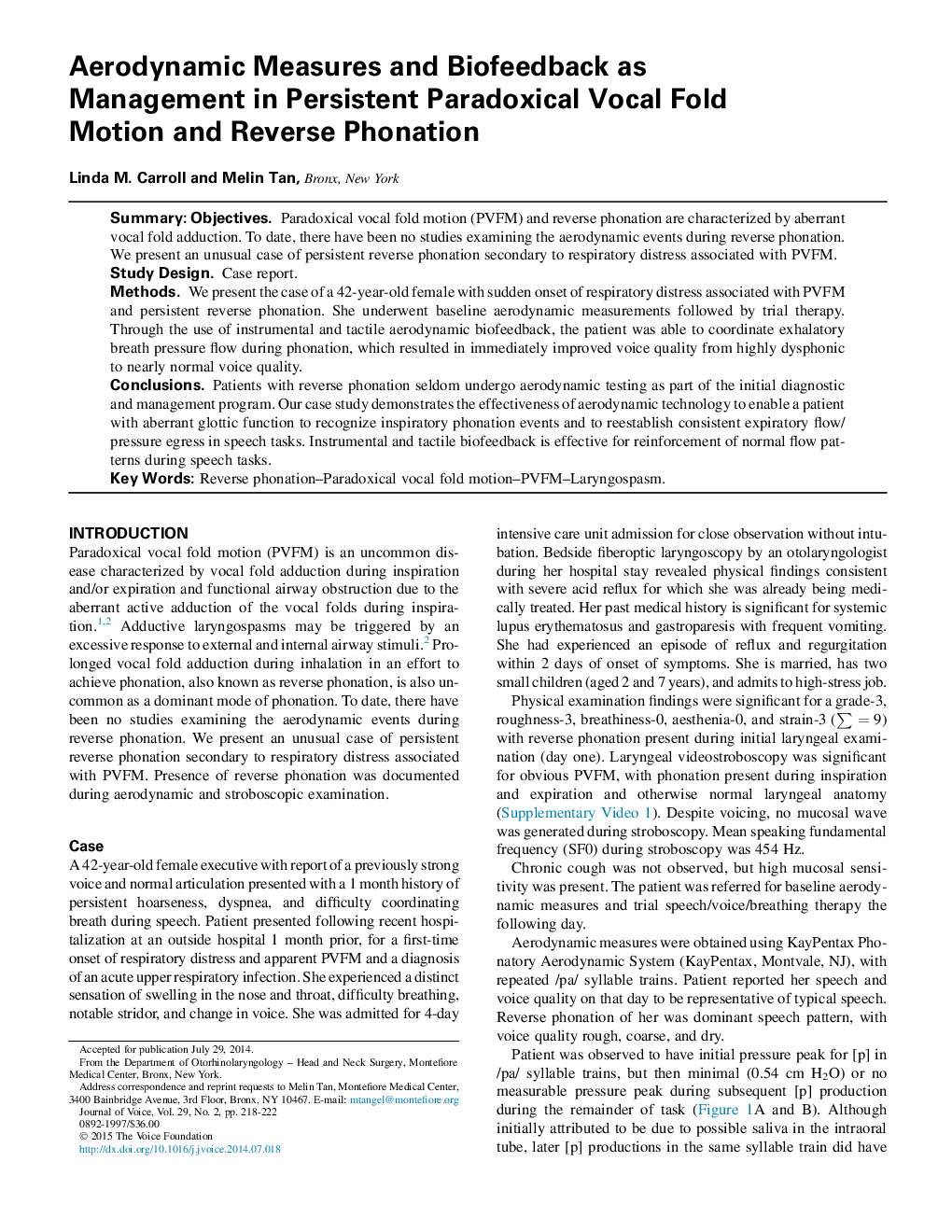| Article ID | Journal | Published Year | Pages | File Type |
|---|---|---|---|---|
| 1101312 | Journal of Voice | 2015 | 5 Pages |
SummaryObjectivesParadoxical vocal fold motion (PVFM) and reverse phonation are characterized by aberrant vocal fold adduction. To date, there have been no studies examining the aerodynamic events during reverse phonation. We present an unusual case of persistent reverse phonation secondary to respiratory distress associated with PVFM.Study DesignCase report.MethodsWe present the case of a 42-year-old female with sudden onset of respiratory distress associated with PVFM and persistent reverse phonation. She underwent baseline aerodynamic measurements followed by trial therapy. Through the use of instrumental and tactile aerodynamic biofeedback, the patient was able to coordinate exhalatory breath pressure flow during phonation, which resulted in immediately improved voice quality from highly dysphonic to nearly normal voice quality.ConclusionsPatients with reverse phonation seldom undergo aerodynamic testing as part of the initial diagnostic and management program. Our case study demonstrates the effectiveness of aerodynamic technology to enable a patient with aberrant glottic function to recognize inspiratory phonation events and to reestablish consistent expiratory flow/pressure egress in speech tasks. Instrumental and tactile biofeedback is effective for reinforcement of normal flow patterns during speech tasks.
